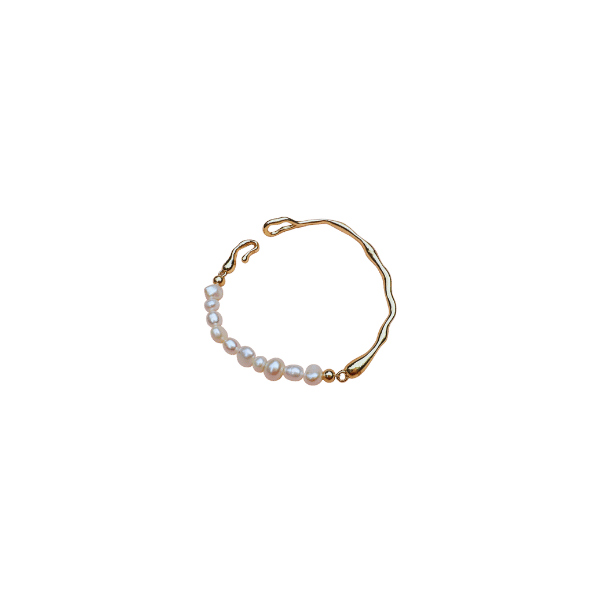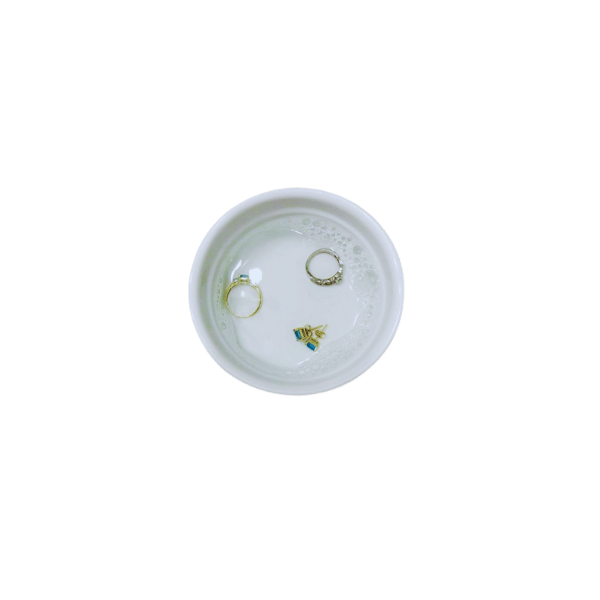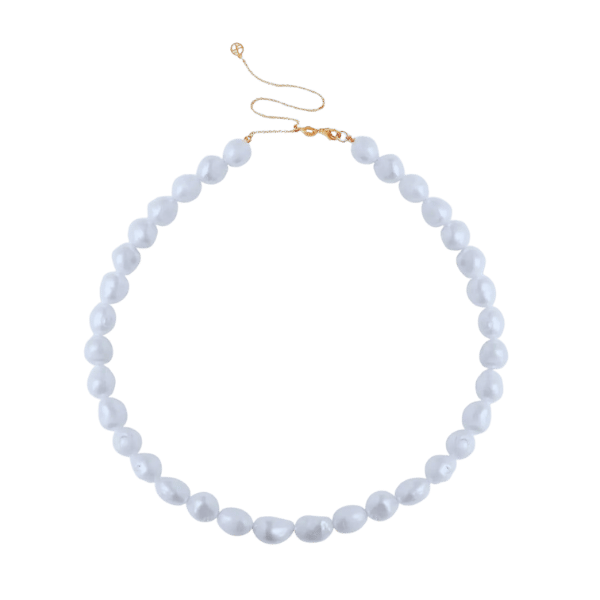This ring is embellished with an elongated radiant cut diamond, and sophistication and modern elegance are captured in one stunning masterpiece. This style is a combination of both traditional and contemporary aesthetics, which makes it a favorite choice due to its distinctive sparkle. This article will delve into the defining characteristics of an elongated radiant cut diamond, its benefits, and its growing acclaim in fine jewelry. The stunning cut will capture your attention, whether you are purchasing a statement piece or an engagement ring. Knowing its alluring features will help you make a seamless, stylish decision.
What is a Radiant Cut Diamond and Why is it Popular?

The radiant cut diamond is a fusion of the emerald cut and a round diamond. Its exceptional glare is caused by the distinctive faceted structure with light reflection-optimizing features and beveled corners. The specific cut's 70 facets are assigned in a snail pattern and complement a different range of jewelry pieces. From the perspective of engagement rings and fine jewelry, the cut has visually stunning practical fragments because of the drawbacks of being hidden and because it's durable. Therefore, it is a magnificent principal choice.
Understanding the Radiant Cut's Faceting and Brilliance
The radiant-cut diamond incorporates the beauty of blends and step cuts of emerald shapes. The brilliant-cut style, with 70 placed facets, enhances light dispersion, producing high levels of fire and brilliance. In addition to minimizing visible inclusions, this arrangement maximizes the diamond's ability to reflect light, making radiant cuts more versatile and stunning additions to fine jewelry.
Comparing the Radiant Cut to Other Diamond Shapes
The radiant cut stands out from other diamond shapes – even from round-cut diamonds – due to its brilliance and sturdiness. The square or rectangular shape, in contrast to the round cut, offers a distinct aesthetic while maintaining the same brilliance levels. The radiant cut has more excellent durability and chipping resistance than the princess cut due to its beveled and clipped corners. For those who prefer more sparkle in their colorless diamond, the radiant cut is more suitable than the emerald cut due to its faceting pattern. Such flexibility makes the radiant cut popular for exquisite jewelry designs and engagement rings.
The History and Evolution of the Radiant Diamond
Henry Grossbard, an expert cutter, pioneered the elegant design of radiant diamond cut in 1977, which beautifully blended emerald cut with a round brilliant cut. Using advanced cutting techniques, Grossbard could engineer a diamond with 70 facets that captured the maximum amount of light whilst preserving a square or rectangular shape. The modern and versatile aesthetic of radiant cut has dramatically increased its popularity over time, cementing its place as a staple design in contemporary jewelry pieces. Its unmatched combination of beauty and strength makes it the perfect masterpiece for elegant and casual jewelry pieces.
Choosing the Perfect Elongated Radiant Cut Diamond Ring

Tips to Choose an Elongated Radiant Cut
- Assess the Length-to-Width ratio: The ratio should fall between 1.3 and 1.5 for those who prefer longer proportions.
- Focus on Cut Quality: Opt for a diamond with an excellent cut grade to achieve the best sparkle and brilliance.
- Examine Clarity and Color: You can select a lower clarity grade and retain visual appeal since radiant cuts can mask inclusions. The color grade should also match the setting material (e.g., mount a white gold or platinum diamond on a near-colorless diamond).
- Ensure Proper Certification: Always ensure the diamond is certified by a laboratory like GIA, AGS, or other reputable facilities for proper quality checks.
- Consider the Setting Style: The halo or solitaire settings suit the elongated shape. While these settings are preferable, they must also protect the edges of the diamond for high durability.
Factors Affecting the Diamond's Clarity and Sparkle
A diamond's sparkle and clarity are affected by the following primary characteristics.
- Inclusions and Blemishes: Both internal imperfections and external markings impact the pathways through which light can pass in a diamond, thus decreasing its brilliance. Blemishes and inclusions that are more difficult to see have higher clarity grades.
- Cut Quality: The precision of a diamond’s cut directly affects its ability to reflect and refract light. A well-cut diamond maximizes light performance and makes it appear more sparkly.
- Cleanliness: Dust, oil, and residue dull the diamond’s clarity and sparkle, making routine cleaning essential. Regular cleaning will help maintain clarity and sparkle.
- Lighting Conditions: The diamond will appear best in proper lighting, such as soft artificial or natural light, and at its worst in poor lighting.
The diamond can maintain its appeal and brilliance over time by focusing on these aspects.
How the Elongated Cushion Style Impacts Perception
The modern cushion cut is achingly beautiful and blended with sophistication while being westernized, which looks to influence perception in different forms. The oval figure can give the illusion of looking larger than it is, unlike the traditional cushion cut, which makes this option much more appealing to buyers who seek a thousand eyes to gawk at them without losing their grace. Research about diamond shapes suggests that elongated shapes, due to their overly pronounced surface area, appear bigger per carat than round or square shapes, making them a lot more appealing.
Moreover, this modification also distinctly changes the light performance of the diamond. The “Bow-tie” effect, more commonly called the elongated light pattern, is a notable feature of the cut cushion diamond shape. This creates a subtle character without you being very possessive to a closer buy. Jewelers claim that the longer these fingers look, the slimmer and longer they add to the ring's beauty, which is why this diamond shape is preferred as an engagement ring design. The appeal of this design continues to rise, especially in those who want a chic selection that isn't overly traditional while also appreciating the available options by the radiant lab. All these points highlight the prowess of the elongated cushion cut in optimally balancing the perception of size, brilliance, and artistry all at once.
How to Maximize the Brilliance of Your Radiant Cut Engagement Ring

Expert Tips on Enhancing Radiant Cut Brilliance
- Prioritize Quality Grades: Strive to obtain a diamond with an excellent or excellent cut grade for the selected radiant cut diamond. This will allow the stone to reflect light optimally, enhancing its brilliance and fire.
- Proper Cleaning and Maintenance: Clean the diamond routinely to prevent dirt and oil from building up and diminishing sparkle. Apply a gentle cleaning solution or have the diamond professionally maintained by a jeweler.
- Consider Setting Design: Select a setting style, such as a prong or halo style, that permits light to reach the stone from as many angles as possible to increase its brilliance.
- Evaluate Under Different Lighting: Check the diamond's appearance with different levels and sources of light. Make sure it still looks brilliant in natural and artificial light.
- Opt for Certified Stones: Buy diamonds from reputable laboratories (e.g., GIA or AGS) because they issue certification. Their unbiased assessments ensure you receive a stone with the best quality and brilliance.
The Impact of Carat Weight and Cut on Radiance
The brilliance of a diamond is influenced significantly by carat weight and cut. Cut is the most crucial aspect in a diamond’s ability to reflect light and create a sparkling effect, whereas carat weight, although a representation of the size of the diamond, does not in itself determine the diamond’s radiance. A diamond’s well-executed symmetrical cut maximizes the proportions of light reflected off the diamond, giving it the appearance of a sparkling object. Thus, excellent cuts should be prioritized to capture optimal radiance in smaller-carat diamonds.
Choosing the Right Side Stones to Complement
Choosing the right side stones is crucial not only for improving the beauty of the center stone but also for balancing the overall design. The side stones must match the central diamond's proportions, cut, and hue. For instance, small diamond baguettes or taper cuts are ideal because they will accent the larger center stone beautification instead of blocking it. Moreover, coherence in visual design is ensured when the side stones’ clarity and color grade match the center stone. Honoring quality equality to the center stone increases the splendor of the ring and its monetary value, so those stones should always be chosen.
Is an Elongated Radiant Diamond Right For Your Engagement Ring?

Pros and Cons of Elongated Radiant Cut Diamonds
Pros
- Illusion of Size: The diamond’s elongated shape makes the carat weight appear more significant than its actual size.
- Versatility: It's suitable for all settings from solos to halo design.
- Brilliance and Fire: The radiant cut's maximized sparkle is unmatched by even the roundest diamond's brilliance.
Cons
- Visible Flaws: Larger surface areas mean inclusions and/or imperfections show, needing a higher clarity grade.
- Shape Variability: Proportion variability of elongated radiant cuts makes the correct length-to-width ratio selection a tough task.
- Limited Market Availability: Compared with the more commonly found round or princess cuts, finding radiant elongated cuts in the market is very unlikely.
Personalizing Your Radiant Cut Diamond Engagement Rings
Redesigning an elongated radiant-cut diamond engagement ring allows for personalizing the piece of jewelry according to the wearer’s preferences and style, including the color and clarity of the stone. Keep these design tips in mind as you work toward your goal.
- Metal Choice: The proper metal selection will complement the wearer's skin tone and the diamond. White gold and platinum provide a modern and timeless sheen, while rose gold or yellow gold exhibit a warmer vintage appeal.
- Setting Style: It is essential to match other settings with radiant cut diamonds. Halo settings increase the brilliance of the diamond by encircling it with smaller accent diamonds. Solitaire settings emphasize the diamond's cut and the diamond itself.
- Length-to-Width Ratio: The ratio range for elongated radiant cuts usually varies between 1.25 and 1.75. These ratios can radically change the appearance of the diamond. A ratio closer to 1.25 delivers a broader rectangular contour, and 1.75 gives the razor-thin elongated look.
- Accent Stones: Side stones or a pavé band might be added to improve the overall design. Trillion or tapered baguette side stones are perfect for framing the silhouette of the radiant cut.
- Engraving and Customization: You can personalize the piece with engraved messages or design elements on the band for an additional fee. These options enhance the piece's emotional value while helping the owner stand out.
- Clarity and Color Choices: Although the radiant cut obscures some inclusions, the goal is still a VS2 or higher. G-H diamonds are highly valued for color because they are face-up white diamonds, but they are not as expensive as D-F diamonds.
Thoughtfully articulating these features will allow the owner to make the elongated radiant-cut diamond engagement ring an impeccable representation of one’s style mixed with elegance, making it a treasured piece of jewelry that symbolizes commitment.
Comparing Radiant Cut and Emerald Cut Styles
Although the emerald and radiant cut diamond styles are stunning and stylish, they vary greatly in design and shape. The emerald cut is ideal for someone who prefers a lavish look, as it features a brilliant facet pattern that maximizes sparkle and fire. It differs from the emerald cut in that the latter possesses step-cut facets, which create a more subdued effect in the hall of mirrors.
The radiant cut is most appropriate for persons who prefer modern glam, while the emerald cut is more popular with those who like vintage-inspired pieces. Ultimately, the decision rests on personal taste and preference and how much brilliance and elegance is desired.
FAQs About the Elongated Radiant Cut Diamond Ring

Maintenance Tips for Your Radiant Cut Diamond Ring
- Regular Cleaning: Use warm water and mild dish soap weekly to clean your ring with a soft toothbrush. Be careful with harsh chemicals; they may damage the fragile metal or weaken the diamond's setting.
- Professional Inspections: A professional jeweler should check your ring every 6 to 12 months to ensure the prongs and setting are firm so the stone will not be lost.
- Proper Storage: Store your diamond ring in a soft cloth pouch or a dedicated space in your jewelry box to prevent scratches and damage from other pieces.
- Remove During Certain Activities: To protect your ring and maintain its brilliance, it's best to remove it before engaging in strenuous physical activities, performing chores around the house, or exposing it to harsh chemicals.
- Avoid Direct Heat or Impact: When handling your ring, take care to prevent chipping or structural weakening from sharp impacts or prolonged exposure to high temperatures.
Following all these steps will best maintain the radiance and durability of your radiant-cut diamond ring for as long as possible.
Understanding Lab-Grown Diamonds for Radiant Cuts
Radiant-cut, lab-grown diamonds are an excellent replacement for mined diamonds due to their lower brilliance. These diamonds are made through sophisticated processes that simulate natural diamond formation. I believe they are almost the same as mined diamonds in physical, chemical, and optical attributes, which means they offer identical sparkle and sturdiness. Ethically sourced, these diamonds help me get a gorgeous cut and are frequently more affordable.
Frequently Asked Questions (FAQs)
Q: Why is the elongated radiant-cut diamond ring so popular as an engagement ring?
A: Moissanite's elongated radiant-cut diamond merges the splendor of an emerald with the sparkle of a round cut, creating a superb masterpiece that perfectly reflects light. Its elongated shape makes the center stone look more extensive, which is desirable in an engagement ring.
Q: In what ways is the elongated radiant cut different from the elongated cushion cut?
A: The elongated radiant and cushion-cut diamonds have an elongated shape. However, the former comes with the unique features of cropped corners and a dualistic shape that is both brilliant and elegant. The more rounded silhouette of the softer elongated cushion cut is also likely to attract individuals who appreciate the classic vintage style.
Q: What is the importance of color grade in elongated radiant-cut diamond rings?
A: The color grade measures the tint of the diamond. Higher color grades (less tint) are preferred for the elongated radiant cut to maximize allure. If the stone's grade is lower but tweaked with rose gold settings, the lower color grade may be considered because the metal modifies the stone’s look.
Q: Are elongated radiant cuts likely to chip?
A: An elongated radiant cut diamond is likelier to sustain chips when set in a square or marquise than in a prong or bezel. The prong and bezel settings offer durable protection against chipping, making the diamond more suitable for everyday wear.
Q: What would be better for an elongated radiant cut diamond ring, a solitaire, or a pavé setting?
A: Both settings are equally suitable for the elongated radiant cut diamond. However, a solitaire setting offers more focus on the diamond, while the pavé setting adds extra diamonds on the ring's shank, making the ring more stunning than it originally was.
Q: How does an elongated radiant cut impact the appearance of total carat weight?
A: The gentle contours of an elongated radiant cut and its elongated shape make the gemstone appear more prominent than when viewed from other angles, thus increasing the perceived total carat weight. Scope without weight increase appeals to most buyers who want to maximize appearance instead of expanding the carat scale.
Q: What clarity grade should I look for within an elongated radiant cut diamond?
A: To maximize visibility and the stone’s brilliance, select a clarity grade of either VS1 or VS2. These grades ensure that there are minimal visible inclusions. The radiant cut’s facets help mask inclusions, so these clarity grades offer a reasonable balance between clarity and cost.
Q: Is the elongated radiant cut a practical diamond shape for different styles?
A: Versatility extends to many design styles, including chic, modern, classic, and vintage. The radiant cut combines square and round features to make it adaptable to different types of jewelry, such as rings, pendants, and earrings.
Q: Why might someone else like the elongated cushion cut diamonds for those interested in radiant cuts?
A: The elongated cushion and radiant have an eye-catching elongated shape, making it attractive for people who appreciate unique shapes. Both cuts range between traditional and contemporary styles, making them ideal for fashionable and chic jewelry.





